The Mineral-Security Nexus presented by Thomas Hale
by Andy Thompson, MSDC Secretary

This report is provided to encourage readers to visit MSDC’s YouTube channel to view the 109-minute video of Thomas' presentation and follow-up question and answer session.
Thomas began by explaining that his presentation focuses on two main themes: (1) why minerals are important, and (2) the role and implications which critical minerals have for international affairs and national security.
When these two themes are considered synoptically, they form the “Mineral-Security Nexus,” the title of his talk. He provided a helpful outline for his talk consisting of ten bullet points listed below.
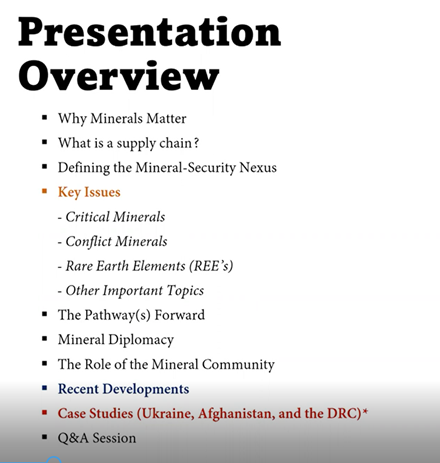
With regard to the first point, why minerals matter, Thomas acknowledged that his MSDC audience already appreciated minerals for their aesthetic qualities. But he emphasized he wanted his listeners “to know what’s going on, have some conversation about why minerals are important to us… and (understand) some of the geopolitical, social and economic implications of (the minerals) we love.”
He said he always tells people that if minerals did not matter, we would not matter. If we did not have the knowledgeable use of mineral resource for making our tools, we would not be talking with each other virtually (on Zoom) but would all be sitting in a field somewhere.
Part of the problem people have, he noted, is that advances in miniaturization of products makes it difficult for today’s consumers to know what minerals they are using. People are familiar with the use of cell phones, for example, but not with the technology and minerals they use. Also, the rapid expansion of these tools requires greater consumption of energy. The growth of the electrical car industry, for example, will require people to engage with issues such as mining, supply chains, and all the bullet points listed in the presentation overview.

The need for minerals essential for electronics and weapon systems raises the question of which nations have them, and which countries are insecure because of a lack of those needed minerals. As noted above, the interface and meshing of these two themes, minerals and international security, constitute the “mineral security nexus.” By mineral club members engaging in this dialogue, he said, they not only enrich the conversation, but provide opportunities for expanding their clubs’ memberships. This awareness and engagement are what Thomas wants to promote.
Throughout his talk, Thomas provided numerous interesting illustrations and links to these issues. Among those minerals critical for today’s electronics are the rare earth elements (REEs). The following exemplified the use of the lanthanide family of metal minerals essential for cell phone touch screens, displays, and speaker systems.
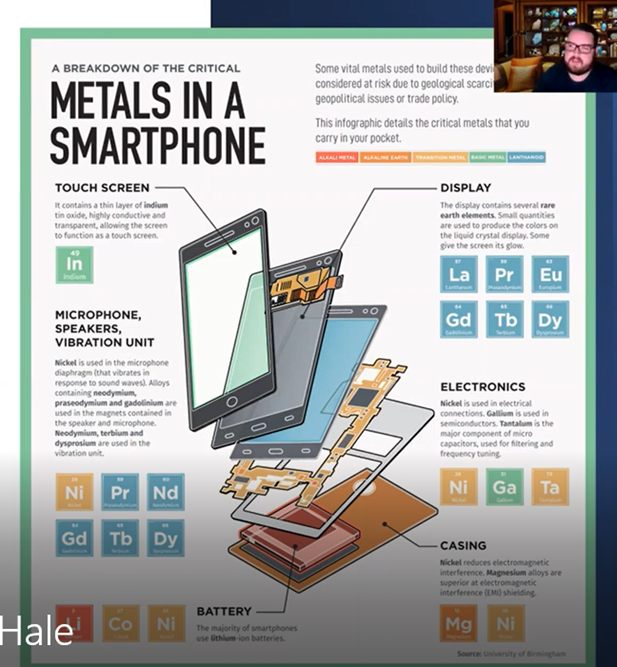
In the following illustration, he used cobalt as a simple example of how one metal typically travels from Africa into an international supply chain which supports electronics across the globe.
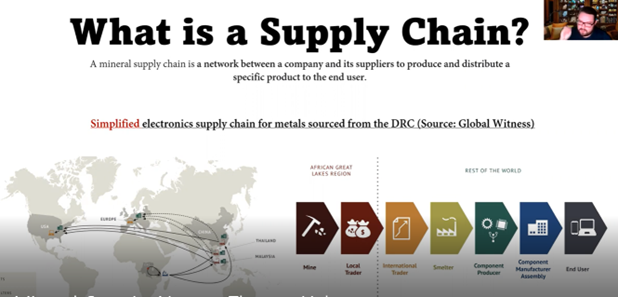
An example of the complexity of the supply chain needed to manufacture semiconductors is shown below. Thomas said that this model had over a thousand nodes or places where failure was a possibility.
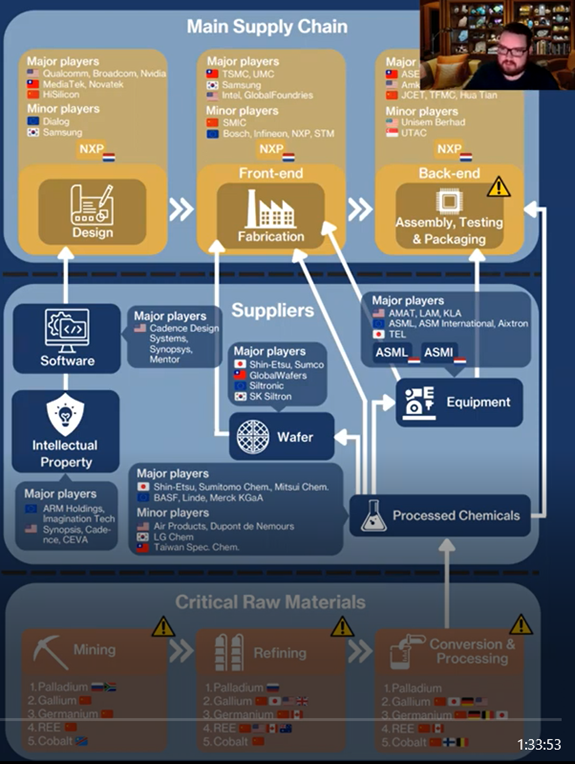
Throughout his presentation, Thomas returned to his main theme of the mineral-security nexus and expanded on its implications for national security, human security, and environmental security.
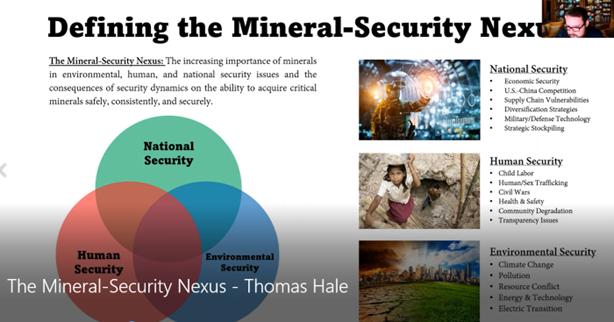
One helpful resource he recommended was the annual USGS Mineral Commodities Summary Report, which provides statistical information on minerals and industry as well as trends related to both. The table below explicitly shows the 20-year trend of how the U.S. relies on importing critical minerals.
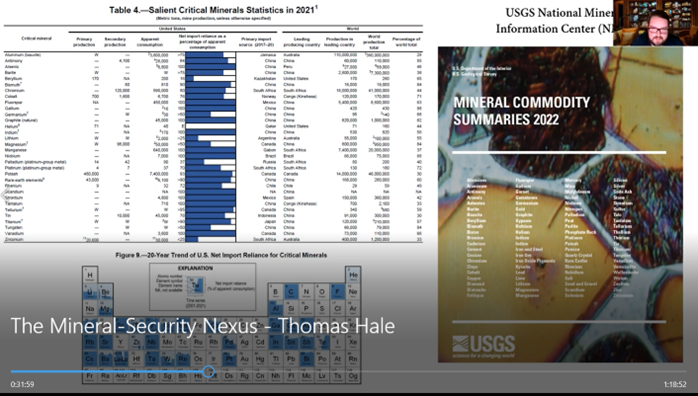
Thomas took issue with a number of individuals and institutions for how they engaged with minerals. In particular, he noted that personnel at Virginia museums felt that the public engaged more readily with biology, physics, and chemistry exhibits than with mineral exhibits. Thomas’ view was minerals were not the problem, but rather that the museum’s displays do not adequately describe the important role of minerals in our daily lives, especially critical minerals.
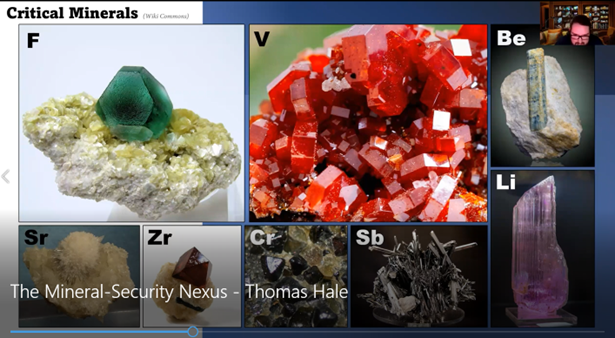
In the category of “other important topics,” Thomas noted that conflict minerals in underdeveloped nations were closely associated with human rights abuses. Similarly, environmental abuses also were a huge concern. He also referenced the struggle that developing nations have for growth and economic development, which is carbon intensive and resource consuming. For example, the manufacture and use of concrete contributes 8% of the world’s CO2 generation.
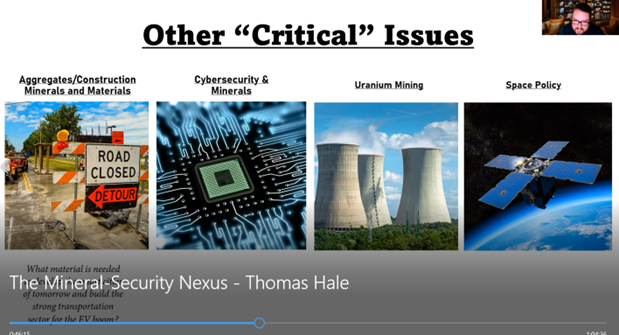
In conclusion, Thomas asks: what is it going to take to move toward resolutions for these complex issues? Thomas answered: “mineral diplomacy.” He provided one poignant piece of information involving public education and training geologists. At Virginia Tech, he noted, the geology department has about 60 students enrolled. In contrast, one Chinese university has 3,000 geology students.
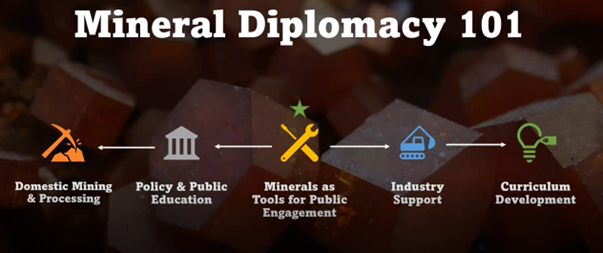
In a final closing note, Thomas shared that his most important concerns at this time have to do with indigenous peoples and their plight in the face of increasing industrial development and massive environmental changes. With that, he brought his presentation to a close and invited questions from his listeners.
MSDC president Kenny Reynolds and Vice President Cindy Schmidtlein thanked Thomas for his fine presentation and the audience expressed their gratitude with applause. The question-and-answer period went on at length and it is all captured, along with Thomas’ presentation, at the MSDC YouTube website here.
